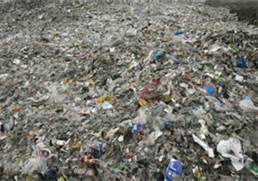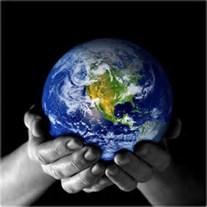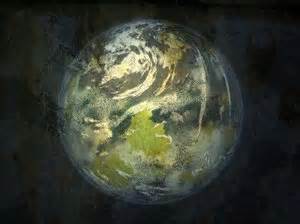Killing Our Planet
Millions of people believe that the next life they live will be better than this life here now. Someone I love and respect very much once said, “You don’t have to worry about what’s happening to life on the planet today because Jesus Christ is coming back soon and he’ll take care of everything.”
“Everything?”
“Yes, everything.”
“When’s he coming?”
“He’ll be here within 75 years.”
“So we don’t have to worry about the destruction of the planet until then?”
“No, don’t worry about it. He’ll be taking care of everything.”
“Well, he’d better get here quick cause I’m not sure the planet can hold out that long.”
Meanwhile the planet is being assaulted by billions of tons of pollutants destroying our air, our water and chopping down trees by the millions and killing animals and our human health that has been protected for millions of years by the Earth’s fragile atmosphere.
It’s obvious from the extreme weather patterns happening by looking at the planet from the North Pole to South Pole, and everywhere in between with flash floods and mud slides, more frequent and severe storms and wild fires and droughts that the planet is warming. Globally, the mercury is already up more than 1 degree Fahrenheit (0.8degree Celsius), and even more in sensitive Polar Regions. And the effects of rising temperatures aren’t waiting for some far-flung future. They’re happening right now. Signs are appearing all over, and some of them are surprising. The heat is not only melting glaciers and sea ice; it’s also shifting precipitation patterns and setting animals on the move.
Some impacts from increasing temperatures are already happening.
- Ice is melting worldwide, especially at the Earth’s poles. This includes mountain glaciers, ice sheets covering West Antarctica and Greenland, and Arctic sea ice.
- Researcher Bill Fraser has tracked the decline of the Adélie penguins on Antarctica, where their numbers have fallen from 32,000 breeding pairs to 11,000 in 30 years.
- Sea level rise became faster over the last century.
- Some butterflies, foxes, and alpine plants have moved farther north or to higher, cooler areas.
- Precipitation (rain and snowfall) has increased across the globe, on average.
- Spruce bark beetles have boomed in Alaska thanks to 20 years of warm summers. The insects have chewed up 4 million acres of spruce trees.
Other effects could happen later this century, if warming continues.
- Sea levels are expected to rise between 7 and 23 inches (18 and 59 centimeters) by the end of the century, and continued melting at the poles could add between 4 and 8 inches (10 to 20 centimeters).
- Hurricanes and other storms are likely to become stronger.
- Species that depend on one another may become out of sync. For example, plants could bloom earlier than their pollinating insects become active.
- Floods and droughts will become more common. Rainfall in Ethiopia, where droughts are already common, could decline by 10 percent over the next 50 years.
- Less fresh water will be available. If the Quelccaya ice cap in Peru continues to melt at its current rate, it will be gone by 2100, leaving thousands of people who rely on it for drinking water and electricity without a source of either.
- Some diseases will spread, such as malaria carried by mosquitoes.
- Ecosystems will change—some species will move farther north or become more successful; others won’t be able to move and could become extinct. Wildlife research scientist Martyn Obbard has found that since the mid-1980s, with less ice on which to live and fish for food, polar bears have gotten considerably skinnier. Polar bear biologist Ian Stirling has found a similar pattern in Hudson Bay. He fears that if sea ice disappears, the polar bears will as well.
Source for climate information: IPCC, 2007
The atmosphere is about 6-30 mi high, with significant concentrations of ozone, formed by the effect of solar ultraviolet (UV) radiation on oxygen and also present in trace quantities elsewhere in earth’s atmosphere. Ozone strongly absorbs solar UV radiation, causing atmospheric temperature to climb to about 30°F (0°C) at the top of the layer, and preventing much of this radiation from reaching earth’s surface, where it would injure many living things.
Chlorofluorocarbons, or CFCs, and some other air pollutants that diffuse into the ozone layer destroy ozone. In the mid-1980s, scientists discovered that a “hole”—an area where the ozone is up to 50% thinner than normal—develops periodically in the ozone layer above Antarctica. This severe regional depletion, explained as a natural seasonal depletion, appears to have been exacerbated by the effects of CFCs, and may have led to an increase in skin cancer caused by UV exposure. Restrictions on the manufacture and use of CFCs and other ozone-destroying pollutants were imposed in 1978. But those restrictions are not doing anything to the pollutants being discharged by the billions of tons into our ozone.
I realize the global warming deniers say the problem is not caused by human behavior. It just so happens that most of those folks benefit or hope to benefit by keeping things the way they are.
But if the ozone is made up of only gases and we’re pumping billions of cubic tons of carbon monoxide and other pollutant gases into the mix, how can it not have an effect on the ozone? And that fact has been proven by 99.9 % of all scientific studies.
Then there is the Hugh Garbage Patch in the ocean The size of the patch is unknown, as large items readily visible from a boat deck are uncommon. Most debris consists of small plastic particles suspended at or just below the surface, making it impossible to detect by aircraft or satellite. Instead, the size of the patch is determined by sampling. Estimates of size range from 700,000 square kilometres (270,000 sq mi) to more than 15,000,000 square kilometers (5,800,000 sq mi) (0.41% to 8.1% of the size of the Pacific Ocean), or, in some media reports, up to “twice the size of the continental United States”. Such estimates, however, are conjectural given the complexities of sampling and the need to assess findings against other areas. Further, although the size of the patch is determined by a higher-than-normal degree of concentration of pelagic debris (a fine-grained sediment that accumulates as the result of the settling of particles to the floor of the open ocean, far from land) and there is no standard for determining the boundary between “normal” and “elevated” levels of pollutants to provide a firm estimate of the affected area.
 A tiny part of the Great Garbage Patch in the ocean.
A tiny part of the Great Garbage Patch in the ocean.
In 1978 when I was on a ferry boat going from The Middle East to Europe, I happened to be sitting at the very back of the boat looking at the ocean when someone from the kitchen come out with three huge wooden boxes of garbage that he could hardly see over or carry, of everything that was considered waste from the ship and he tossed it all off the back of the ship, boxes and all, seemingly without even thinking about it. And then he came back carrying several more boxes overboard. I’m sure that trash is still in the ocean today along with millions of tons more garbage of all type dumped since.
I guess the people who don’t believe global warming is caused by human beings (and corporations) hope that they can still benefit from the release of more pollutants into the air and water and onto the land if they can keep up the production of the problem. And, of course, they are going to be just as affected by the planet being degraded as everybody else is.
But, then, I guess there are some people who want to believe that someone is going to come and save us all within 75 years.
But wait a minute — the person who I love and respect very much — said that more than 40 years ago. What’s that leave us? Less than 35 years? Hmmm…. I hope he makes it in time.


